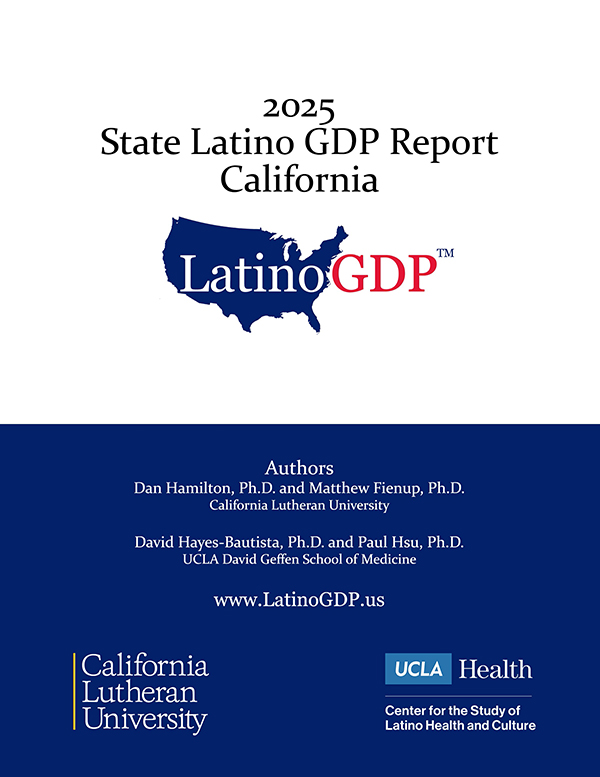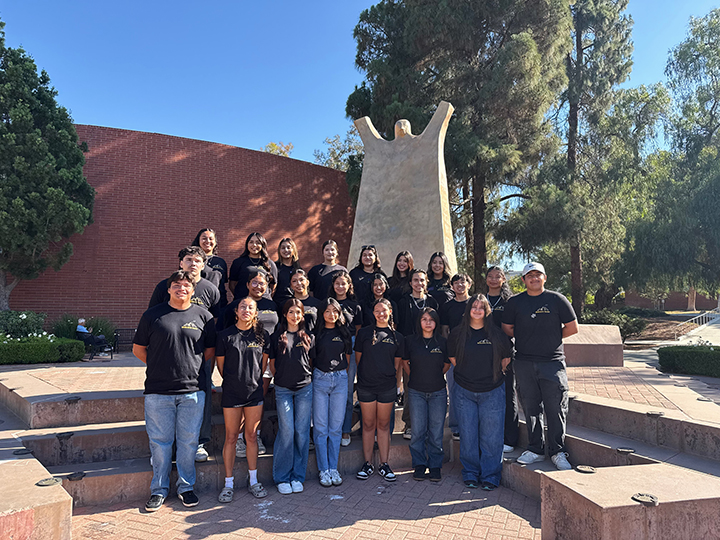If California Latinos were an independent state, their GDP would be the nation’s sixth-largest state GDP, larger than the economy of Pennsylvania or Ohio, according to the 2025 California Latino GDP Report by researchers at California Lutheran University and UCLA.
“Latinos’ participation in the California economy is more active, more intense than that of Non-Latinos,” said Matthew Fienup, Ph.D., executive director of the Center for Economic Research and Forecasting at Cal Lutheran and coauthor of the report with David Hayes-Bautista, Ph.D., distinguished professor of medicine at UCLA. “The importance of rapid Latino growth rates, and the intensity of economic activity they represent, cannot be overstated. The vitality of the overall California economy depends on the intensity of the economic activity of Latinos.”

The research focused ona wide range of economic indicators, including population and labor force, labor force participation, educational attainment, consumption and more. The results revealed that California’s Latino labor force is growing 15 times faster than the Non-Latino labor force. Latino educational attainment is growing 3.4 times faster than that of Non-Latinos, and they are 5.6% more likely to be actively working than their Non-Latino counterparts.
The state’s Latinos also enjoy better health outcomes, with lower age-adjusted mortality across all five leading causes of death and a life expectancy that is more than two years longer than Non-Latinos’.
The report also highlights the importance of California’s Latino immigrant population. In 2023, 41% of working-age Latinos in California were immigrants. Applying that share to the California Latino GDP, the researchers estimate that Latino immigrants are responsible for nearly $400 billion in annual economic output in California.
Together, immigrant and U.S.-born Latinos drive economic growth and contribute to the resilience of the state’s economy.
Stronger economic growth, or GDP growth, benefits all workers through rising wages, higher standards of living and greater economic mobility across the economy.
Highlights from the 2025 California Latino GDP Report
- In 2023, the California Latino GDP surpassed $1 trillion. Without Latinos, California’s GDP would be the eighth-largest GDP in the world. With their contribution, California is in the top five.
- Since 2019, California’s Latino GDP has grown more than two times faster than Non-Latino GDP, despite significant COVID-19-related mortality.
- The top five Latino GDP industry sectors are Finance and Real Estate (where Latinos produced over $137 billion in output in 2023), Professional and Business Services ($109 billion), Government Services ($98 billion), Education and Healthcare ($81 billion) and Retail Trade ($80 billion).
- California’s Latino economy is more diversified than the broader state economy. In this way, Latinos provide a broad foundation of support and greater resilience for the state’s economy.
- Latinos living in California represent a $730 billion consumption market, larger than the economy of Virginia or Michigan.
The 2025 California Latino GDP Report builds on research released earlier this year detailing the economic impact of U.S. Latinos on the nation’s economy. The 2025 U.S. Latino GDP, released in April, revealed that the direct economic output of U.S. Latinos surged past $4 trillion for the first time. At $4.1 trillion, the U.S. Latino GDP represents the world’s fifth-largest GDP, larger than the entire economy of India.
Since the onset of the COVID pandemic, the U.S. Latino GDP has been the single, fastest-growing among major economies, growing more rapidly than China’s GDP.
To download the full report, visit latinogdp.us. Reports for various other geographies, including the 2025 U.S. Latino GDP Report, are also available. For questions about the reports, contact Fienup (mfienup@callutheran.edu).
About the Center for Economic Research and Forecasting (CERF): CERF is a nationally recognized economic forecasting house. CERF economists Matthew Fienup, Ph.D., and Dan Hamilton, Ph.D., are members of the Wall Street Journal Economic Forecasting Survey, the National Association for Business Economics (NABE) Economic Outlook and Economic Policy Surveys and the Fannie Mae Home Price Expectations Survey. CERF is the recipient of the 2024, 2021, 2020 and 2019 Crystal Ball Award for the Fannie Mae Home Price Expectations Survey. CERF’s two-year-ahead U.S. home price forecast was the single most accurate among more than 100 professional forecasts. CERF seeks to be a solutions-oriented organization, providing world-class economic forecast publications, analyzing the effects of economic policies and working with diverse stakeholders to address the major economic challenges of the day.
About California Lutheran University: Founded in 1959 and federally recognized as a Hispanic-Serving Institution since 2016, California Lutheran University is home to over 2,200 undergraduate and 1,000 graduate students. Our students come from 58 countries and represent many faiths and spiritualities. Our dedicated, accomplished faculty teach in small classes, guiding our students as they grow into open-minded leaders who are strong in character and judgment, confident in identity and vocation, and committed to service and justice. Everyone at Cal Lutheran is committed to helping students pursue their passions, discover their purpose and transform their communities. Learn more at CalLutheran.edu.
Media Contacts
Matthew Fienup
Executive Director
Center for Economic Research and Forecasting
805-493-3668
Tom Hoener
Associate Vice President for Enrollment Management
California Lutheran University
thoener@CalLutheran.edu
Sarene Wallace
PR Consultant
sarenewallace@CalLutheran.edu









